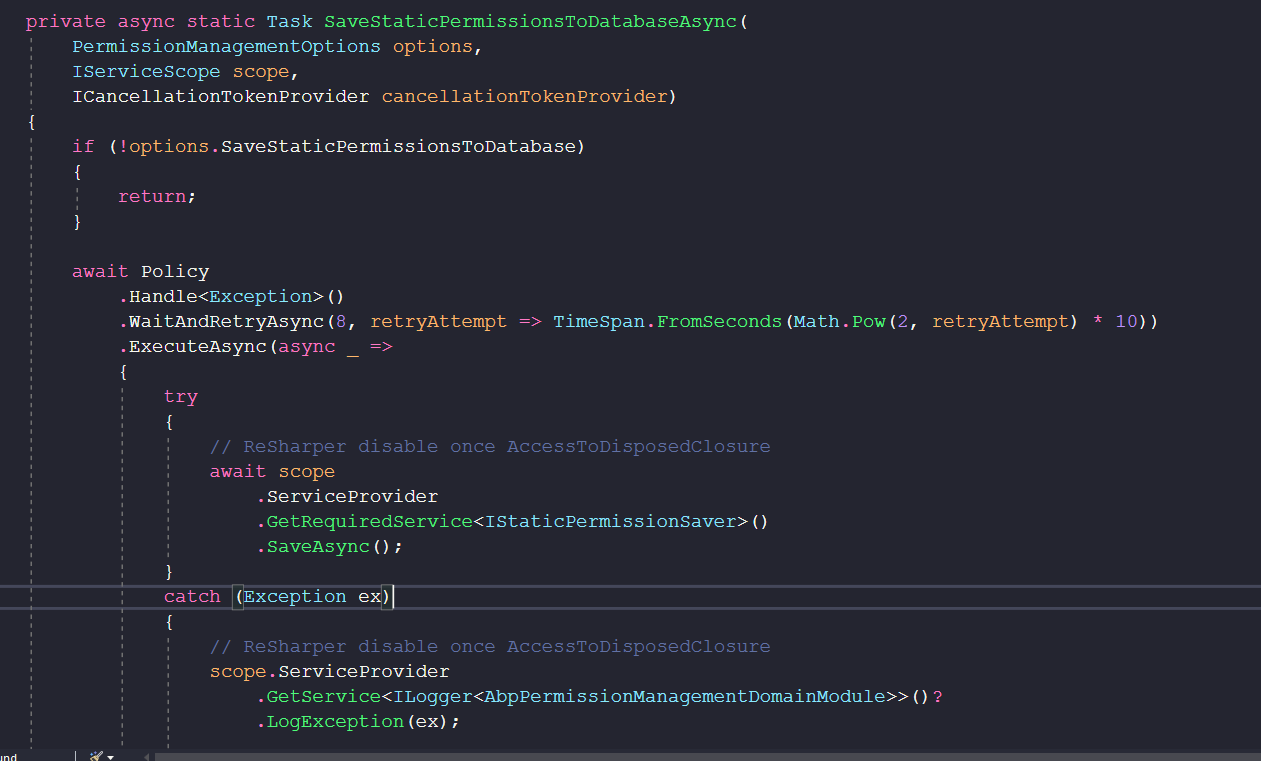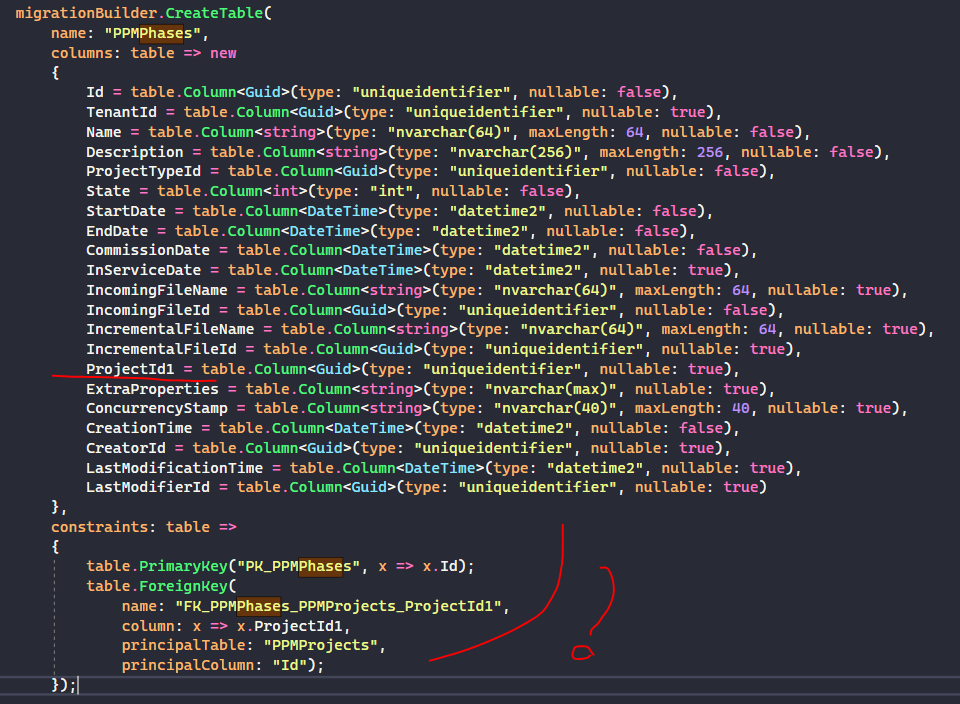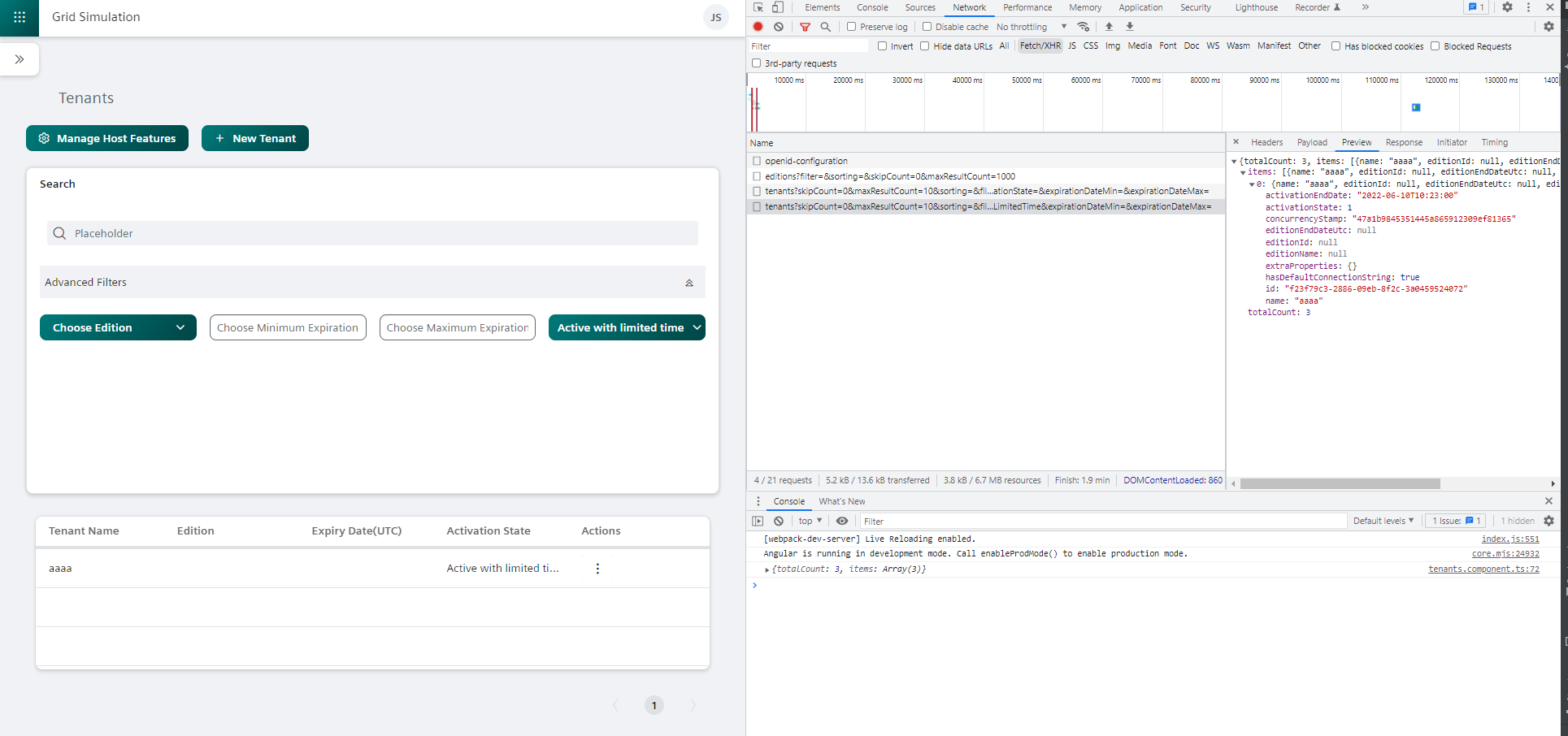We're having exactly same issues with below link for backend and frontend :
https://support.abp.io/QA/Questions/5722/Publish-Project-in-IIS-server it says it's solved but there isn't any explanation about solution ! Can you share the solution ?
Hello,
Like your SignalRTieredDemo.Web we have a MessageEventHandler class in web layer.
When we want to send a request from this class to our api host with interface injection (dynamic proxy method) we get the below exception which is Code:Volo.Authorization:010001.
And it makes sense actually because this handler starts to work even user doesn't login. It triggered by Rabbitmq.
How can we solve this issue ?
Thank you
So what about , permission and feature side , these have different implementation ? Settings domain module doesn't have any saveasync thing , so how does this module persist definition providers at first run ?
Hello,
We are building a system like some entities will be seeding over different modules which are using this centralized service.
We'll need something like this :

When I check the code from abp repositories like (Volo.Abp.Settings, Volo.Abp.Features , Volo.Abp.Authorization.Permissions) I couldn't understand when these definitions are seeding into database, when they are persisting ?
I saw below approach in Feature and Permission side :


But I couldn't see the same approach on Settings part, but I know Settings also has a definitionProvider but I couldn't understand when these configurations persisting ? How settings module handle that ? By the way what is the difference between SaveStaticPermissionsToDatabaseAsync or InitializeDynamicPermissions (these are also included in feature side, too ) persistence. I couldn't see any documentation about these topics . But we need to understand how this system works and then we can implement for our own module. We want to understand the design of these approaches overall, Can you help ?
Thank you
Hello, We know you have an abstraction module for user syncronization between multiple modules like below link . https://support.abp.io/QA/Questions/1442/Sync-Users-Between-Modules Do you think to add this abstraction layer for the rest of the identity models like organizationunit or role, permissions ... ? If you don't, can you explain why , is it a bad practice ? As we doing with User entity, we can also need organizationunit syncronization (or other identity entities) incase of deploying to another place this identity module, right ? What do you think about ?
Thank you ?
Hello , Anyone checked this issue ? Just a reminder :)
Thank you.
Hello , We have different aggregate roots , they have a relation over Id property like below :
created migration with foreign key:

Like you saw in the pictures , even we try NotMapped attribute , still migration is creating foreign key automagically :) Depends on your framework suggestions and DDD , we don't want to generate foreign key between aggregate roots , instead we keep them seperately, we just want to saw ProjectId column inside Phase table not foreign key relation . But we can not do that right know it's always creating itself , we can't understand the situation.
Below example is from an outside-native ef core in a console application, when we don't use abp-wrapped ef core, they can prevent the generation of foreign key , if we ignore the navigation property , they don't create the foreign key. We're expecting the same approach basically.
What can we do about this situation ? Thank you
Hello,
Actually, yes we can override easily :) We don't do another request like you mentioned :)
For example:

In this example, we are filtering the tenants just with activation state , it returns 1 record (which is true in our case , because we have only 1 record with that activation state in the db) , because of the total count which is 3 (because of GetCountAsync() filtering issue) , our datatable's and paging is just going crazy.
So , we can override of course , but what do you think about this specific example ? Is it right when you have paging and you're filtering the records you have totally 3 records from the count but the real count is 1 so you are expecting 2 more records because max count is 10 ? What do you think ?
Hello , we want to filter /api/saas/tenants with ActivationState parameter , but total count parameter returns wrongly from backend . We've checked from the module code : Why doesn't count method use the same filtering with the GetListAsync () method ?
Why do you use only EditionId and name filtering for GetCountAsync() ? Is there any reason or is it forgotten ?
Thank you.

